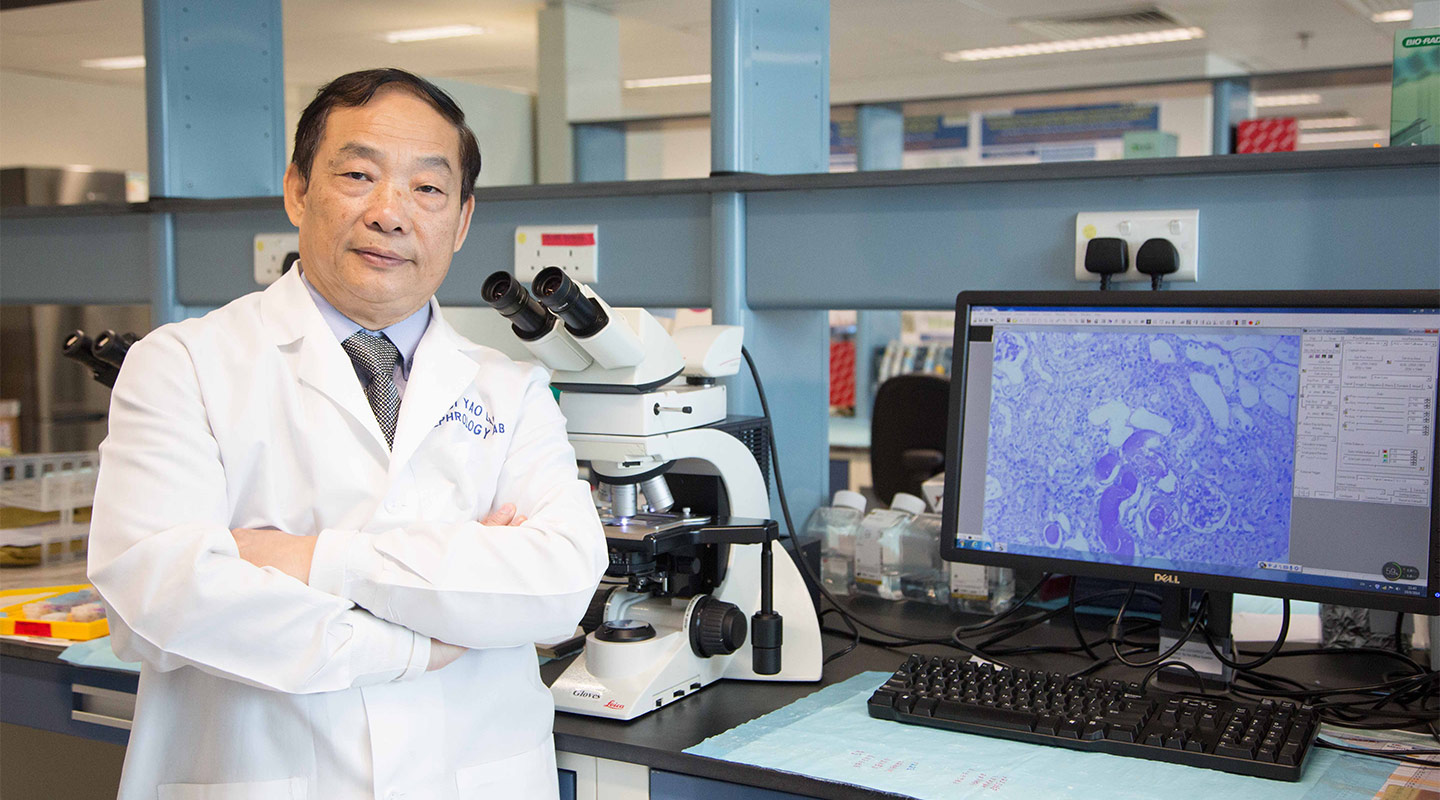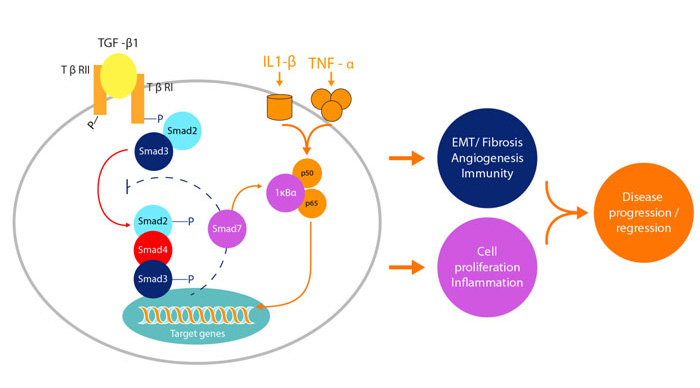Dear readers, With the launch of e-newsletter CUHK in Focus, CUHKUPDates has retired and this site will no longer be updated. To stay abreast of the University’s latest news, please go to https://focus.cuhk.edu.hk. Thank you.
New Hope in Organ Scarring Prevention: CUHK scholar discovered the main pathway and the culprit

Prof. Lan Hui-yao
Department of Medicine & Therapeutics
Professor Lan Hui-yao, a professor of biomedical sciences in CUHK’s Department of Medicine & Therapeutics, has devoted his academic efforts to the battle against scarring in the body’s vital organs. He has identified the main pathway that leads to scarring, as well as the molecules that bind with receptors, then proceed down the pathway to the gene and cause or inhibit fibrosis. His discovery could stem the deterioration in patients with diabetes, heart disease or liver damage.
It is inflammation and then scarring of the tissue in the lungs, heart, liver and kidneys from any number of diseases that cause those organs to lose their capability. Any scarred, fibrotic tissue no longer functions. Given enough scarring, the entire organ loses so much of its capacity that it can no longer meet the body’s needs. Such “end-stage” kidney patients then require dialysis. Heart or liver patients require transplants.
It took Professor Lan 15 years and some US$20 million in grants to identify that the signalling pathway known as TGF-beta 1 (transforming growth factor-beta 1) is the main conduit to scarring. That was uncovered by deleting a variety of genes in thousands of laboratory mice that suffer from different diseases mimicking human conditions. He used enzymes to cut the genes out of the germ cell that causes the body of the mice to develop.

Professor Lan was put on that trail by starting out as a pathologist. He found scarring as a shared feature for people who had died from chronic heart, kidney, liver and lung diseases and started a quest to identify the culprit. By scanning sections of tissue, he found that TGF-beta 1 is the most prominent pathway in scarred tissue.
Professor Lan then went on to identify a signalling protein, Smad3, that travels down the pathway into the gene and causes scarring in many chronic diseases. The findings have been covered by many academic journals, featuring as a cover story about heart-tissue scarring in Circulation Research and a cover story about kidney disease in the Journal of the American Society of Nephrology, both leading publications in the field.
Smad3 is the “bad guy,” a regulatory molecule that can bind to fibrosis genes and cause tissue scarring to occur. In contrast, a protein called Smad7 that is also present in the TGF-beta 1 signalling pathway is the “good” molecule, in that it counters the functions of Smad3, holding it in check and inhibiting scarring.
He also worked out that Smad3 can be regulated and reduced by naringenin, a chemical found in the peel of citrus fruits that gives them their distinctive flavour. Professor Lan believes this is why chan pei or orange peel is found in many Chinese dishes, including red-bean dessert soup, and why it is almost omnipresent in Chinese herbal prescriptions.
Naringenin has been used to prevent fibrosis in the treatment of many diseases. “Chinese medicine discovered it 3,000 years ago,” Professor Lan says. Practitioners of Chinese medicine “know it works, but they don’t know why.”
Likewise, doctors of traditional Chinese medicine have been using the herb centella to treat liver fibrosis very effectively. Professor Lan discovered that centella contains Asiatic acid, which stimulates the production of Smad7, stalling scarring.
For the past five years, the focus has also been on transferring the academic knowledge into the clinic, to create real-world treatments. While rapid scarring can occur in less than half a year, diseases such as diabetes, hypertension and fatty liver can take a quarter of a century to cause organs to deteriorate, meaning there’s plenty of time for preventative measures.
Based on Professor Lan’s discovery, CUHK has licensed the rights to develop a new drug compound to the Hong Kong company Moexa. It is now manufacturing Fikenzo, a drug that contains both naringenin and Asiatic acid. Moexa has applied for funding from the Hong Kong government to turn that drug into pill or capsule form, potentially as an off-the-shelf daily health product like a vitamin or cod-liver oil. “Once we know the chemical structure, we can synthesize it,” Professor Lan notes.
By Alex Frew McMillan
This article was originally published on CUHK Homepage in Nov 2014.
Read More: